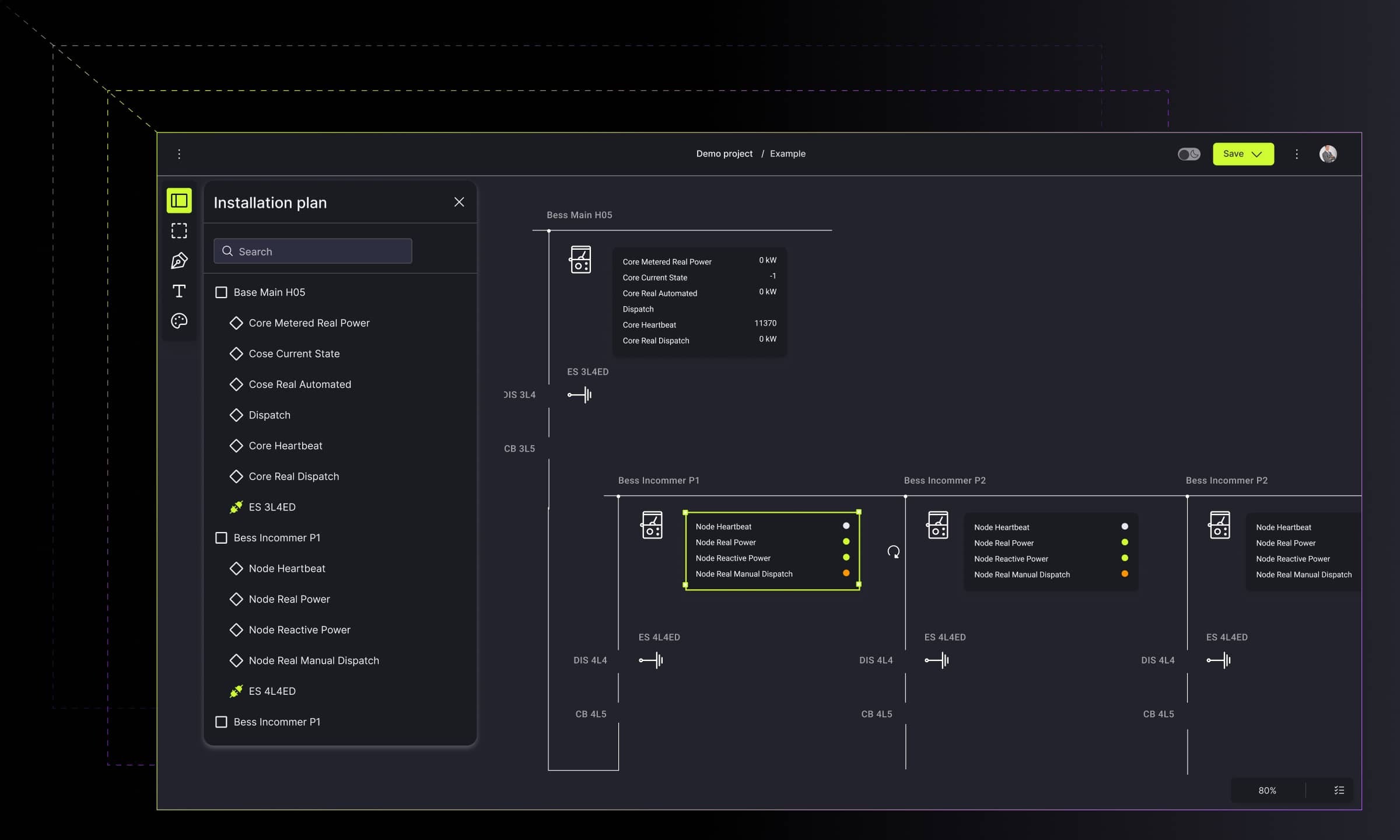Top 10 free graph visualization software to simplify complex data
Let’s explore the best graph visualization tools available for free, including open-source solutions and graph database visualization platforms.

In today’s data-driven world, making sense of complex relationships is more critical than ever. Whether analyzing social networks, mapping financial transactions, or managing IT infrastructures, graph visualization software plays a key role in turning raw data into practical insights. But what if you're on a budget? The good news is that several free graph visualization tools offer robust functionality without breaking the bank. Let’s explore the best tools available for free, including open-source solutions, graph database visualization platforms, and interactive graph visualization tools.
Understanding graph visualization tools
Before diving into the list, it's essential to differentiate between two categories of graph visualization software:
- Graph visualization tools: These tools specialize in creating interactive graph visualizations to help users explore patterns, structures, and relationships. They focus on presenting data in a visual format. Users can manipulate the graph to see how elements are connected.
- Graph database visualization tools: These tools allow users to interact with graph databases, and analyze connections between entities stored in the database. They are directly integrated with graph databases. Users can query the database and visualize the results dynamically.
Now, let’s explore the best free graph software.
Best free graph visualization tools
1. yEd Graph Editor
yEd Graph Editor is one of the best free graph tools for creating high-quality diagrams quickly and efficiently. Its intuitive interface and automatic layout algorithms make it ideal for mapping workflows, process diagrams, and organizational charts.
With yEd Graph Editor, users can effortlessly create and manage complex networks using various built-in templates and customization options. The tool supports automatic layout algorithms, which organize data into structured and visually appealing graphs. This makes it a versatile choice for professionals who need a simple yet powerful graph visualization solution.
Key features:
- Drag-and-drop functionality for easy graph creation.
- Imports from Excel, XML, and other data formats.
- Exports to PNG, SVG, PDF, and SWF.
2. RAWGraphs
RAWGraphs is an open-source graph visualization software designed for data scientists, journalists, and business analysts. It provides a bridge between spreadsheet data and visual representation, making it one of the best free data visualization tools for simple and custom creation.
One of RAWGraphs' main strengths is its ability to transform tabular data into various types of visual representations without requiring advanced technical skills. Unlike many other tools, RAWGraphs focuses on ease of use and flexibility, making it an excellent option for those who need a quick and efficient graph maker free of charge.
Key features:
- Supports CSV and JSON data imports.
- Customizable chart types, including scatter plots, dendrograms, and network graphs.
- Export options include SVG and PNG for easy sharing
3. Graphviz
Graphviz is highly popular among developers and data scientists looking to create network visualization tools through code. Graphviz operates on a unique DOT language, allowing users to define graphs through scripts rather than through a graphical interface. This makes it an ideal choice for those who need automated, scalable, and highly customizable graph solutions. It excels in hierarchical visualization, making it widely used in academia, software development, and network analysis.
Key features:
- Uses DOT language for defining graphs.
- High-quality rendering of hierarchical layouts.
- Integrates with multiple programming languages.
4. Sigma.js
Sigma.js is one of the best graph visualization tool for web-based interactive graph creation. This open-source graph visualization library is particularly effective for graph visualization online, allowing real-time interaction with data. Sigma.js is an excellent choice for web developers. It provides customizable styling options, allowing users to tweak node and edge properties dynamically. It also supports large-scale graph visualization, ensuring smooth performance even with thousands of connected nodes.
Key features:
- WebGL-based for smooth, fast rendering.
- Supports large-scale graph visualization.
- Customizable node and edge styling.
5. Sourcechart
Sourcechart is a specialized graph visualization tool designed to help developers explore and understand complex codebases. It allows users to visualize dependencies, functions, and relationships within software projects, making it a valuable resource for both small and large development teams.
Key features:
- Automatic graph generation based on repositories.
- Integration with GitHub, GitLab, and Bitbucket.
- Customizable graph layouts and filtering options.
Quick comparison of free graph visualization tools
GraphEditor.io – premium interactive graph visualization tool
GraphEditor.io is a professional graph visualization tool designed for businesses and developers who need an interactive, real-time graph visualization solution. While it is not entirely free, GraphEditor.io offers a free trial that allows users to explore its powerful features.
Key features:
- Drag-and-drop graph creation for ease of use.
- Advanced customization options, including node styling and layouts.
- Real-time collaboration and editing for teams.
- API integration for seamless connection with external data sources.
Advantages:
- Ideal for business intelligence, software architecture mapping, and data analysis.
- Provides a highly interactive user experience.
- Enterprise-ready with scalable features.
If you're looking for a powerful interactive graph visualization tool with enterprise capabilities, GraphEditor.io is worth considering. Try the free trial to explore its full potential!
Best free graph database visualization tools
Now that we've covered the best free graph visualization tools, let’s move on to graph databases. These include Neo4j Desktop, JanusGraph, OrientDB Community, and Apache TinkerPop, which specialize in handling and visualizing large-scale relational data stored in graph databases.
6. Neo4j Desktop
Neo4j Desktop is one of the most widely used graph db visualization tools available. As a part of the Neo4j ecosystem, this tool allows users to store, query, and visually analyze graph data in an intuitive and efficient manner.
Key features:
- Built-in visualization tools to explore graph data interactively.
- Supports Cypher query language for advanced data retrieval.
- Works well with large-scale graph datasets.
- Provides integrations with Python, Java, and other programming languages.
7. JanusGraph
JanusGraph is an open-source graph database optimized for storin and querying massive graphs. Built for high availability and scalability. It integrates with popular database backends such as Apache Cassandra, HBase, and Google Bigtable.
Key features:
- Highly scalable architecture for large datasets.
- Supports Apache TinkerPop’s Gremlin query language.
- Compatible with big data frameworks like Hadoop and Spark.
8. OrientDB
OrientDB is an open-source database that supports graph database visualization along with document, object, and key-value models. It offers a flexible and scalable architecture ideal for applications requiring complex relationship mapping.
Key features:
- Integrates with big data frameworks.
- Provides graph visualization capabilities for structured data analysis.
- High-performance with multi-master replication.
9. GraphDB Free
GraphDB Free is a graph database visualization tool that allows users to store and query RDF (Resource Description Framework) data. It is widely used in knowledge graphs, AI applications and linked data analysis.
Key features:
- Optimized for semantic data and ontology management.
- Offers visual exploration of graph relationships.
- Includes automatic reasoning and inferencing features.
10. Apache TinkerPop
Apache TinkerPop is an open-source graph computing framework that provides the Gremlin graph traversal language. It is used in large-scale applications for graph database visualization and big data processing.
Key features:
- Supports distributed graph processing.
- Open-source with strong community support.
- Works with various graph storage backends, including JanusGraph and OrientDB.
Quick comparison of free graph database visualization tools
Choosing the right open-source graph visualization tool
Choosing the right graph visualization software depends on your specific needs. Whether you require a simple tool for quick visualizations, an interactive graph visualization platform for real-time collaboration, or a graph database for deeper analysis, there is a free tool that fits your requirements. Each presented tool offers unique strengths. Exploring these solutions can help simplify complex data relationships, enhance decision-making, and provide valuable insights into interconnected data structures.
For more advanced solutions, check out GraphEditor.io, a premium interactive graph visualization tool offering a free trial.
Find how we can help you enhance your software and win more deals
Contact us to discuss your project. After you submit the form, we’ll get in touch with you within 48 hours to arrange a call.






